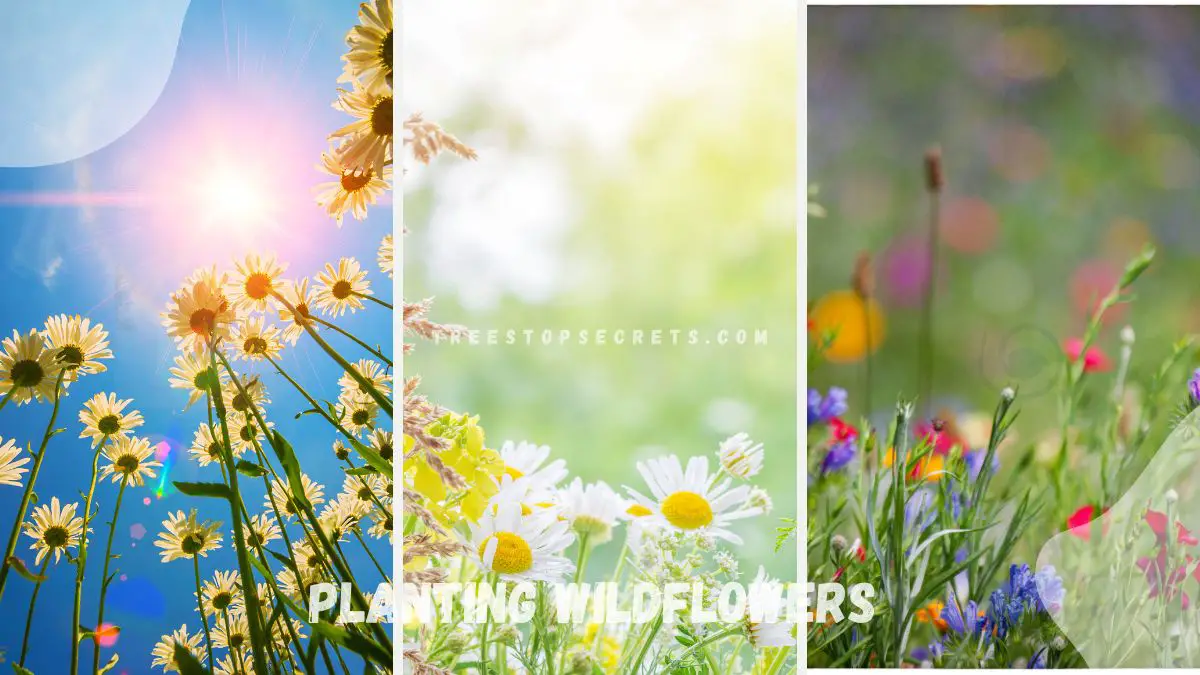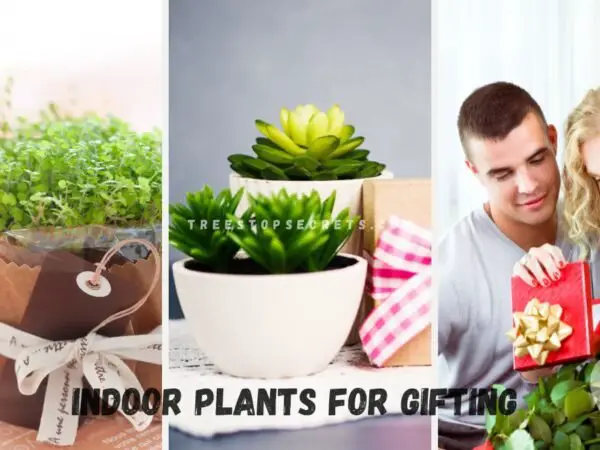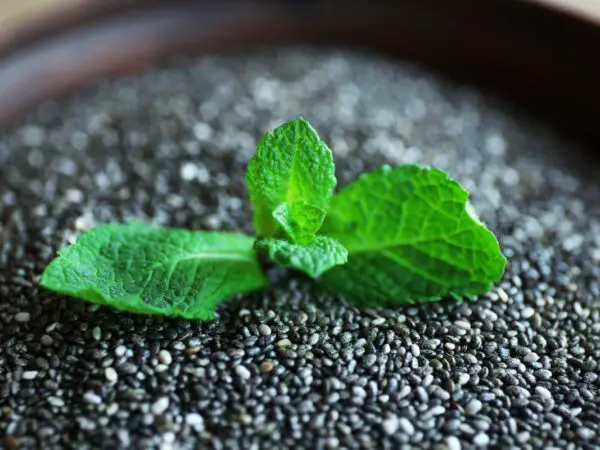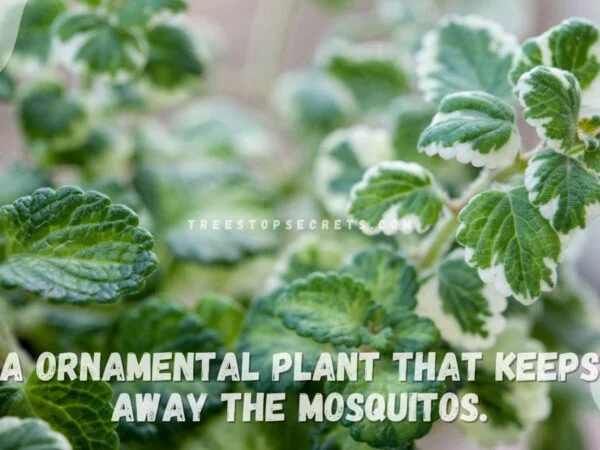Planting wildflowers can transform your garden into a vibrant, low-maintenance paradise. Whether you have a small plot or a large meadow, learning how to plant wildflowers will bring natural beauty and attract beneficial pollinators like bees and butterflies. I’ll guide you through the essential steps to create a flourishing wildflower habitat, from preparing the soil to selecting the right seeds and maintaining your garden. Let’s get started on making your outdoor space burst with color and life.
To plant wildflowers, start by selecting a sunny location and preparing the soil by removing weeds, tilling the top few inches, and seeding. Choose a seed mix suited to your region and soil type. Scatter the seeds evenly over the area, then lightly rake them into the soil or press them down to ensure good soil contact. Water the area gently but thoroughly after sowing and keep the soil moist until the seeds germinate. For best results, plant wildflowers in early spring or late fall, and avoid fertilizing, as wildflowers thrive in nutrient-poor soil.
Ready to learn more about nurturing your wildflower garden? Discover expert tips on maintaining your wildflowers and attracting diverse pollinators to your garden.
Key Takeaways
- Plan your wildflower garden: Consider the location, sunlight, soil type, and types of wildflowers you want to grow before planting seeds.
- Prepare the site: Clear the area of weeds and debris, loosen the soil, and ensure good drainage for optimal wildflower growth.
- Plant seeds strategically: Sow seeds at the right depth, spacing them adequately for proper growth and development.
- Water consistently: Provide regular watering, especially during dry spells, to help wildflowers thrive and bloom beautifully.
- Care for growth: Monitor for pests, weeds, and diseases, and provide necessary care like fertilizing to support healthy wildflower growth.
- Enjoy your blooms: Once your wildflowers bloom, take time to appreciate their beauty and the effort you put into creating a vibrant garden.
Planning Your Wildflower Garden
Choosing the Location
When planting wildflowers, evaluate the amount of sunlight the area receives, aiming for at least 6 hours daily. Check the soil drainage to ensure optimal root growth and confirm that existing vegetation can support wildflowers.
Seed Mix Quantity
To determine the right amount of seed mix needed, measure the planting area accurately. Consult seed coverage rates to ensure proper seeding density and adhere to the recommended seed amount for the best results.
Optimal Planting Time
For most regions, it is advisable to sow wildflower seeds in spring after the last frost. In the desert Southwest, fall is the ideal time for planting, while in areas with snowfall, winter seeding is suitable for spring growth.
Preparing the Site
Soil Preparation
When planting wildflowers, remove all existing growth and seed to prevent competition for resources. Loosen the soil to help seedlings establish roots and access nutrients efficiently. Avoid sowing seeds in compacted or nutrient-deficient lawn soil to promote successful growth.
Clearing the Area
Eliminate all grass and weeds from the planting site to provide a clean canvas for wildflowers to flourish. A weed-free environment is essential for optimal seedling growth and prevents unwanted competition for sunlight and nutrients. Creating a clear area ensures that wildflowers have the best chance to thrive.
Planting the Seeds
Sowing Techniques
Plant wildflower seeds by mixing them with sand to ensure better visibility when sowing. This method helps you see where the seeds have been scattered, ensuring even distribution across the planting area. Sow the seeds in two separate batches to promote uniform coverage and prevent overcrowding of seeds in one spot. By compressing the seeds into the soil gently after sowing, you can improve their chances of germination.
Ideal Depth and Spacing
When planting wildflowers, always adhere to the recommended depth for each type of seed to support optimal growth. Proper spacing is crucial for the healthy development of wildflowers. Different types of seeds require specific spacing to thrive, so follow guidelines based on the seed type you are planting. Ensuring both the correct depth and spacing will contribute to robust and vibrant wildflowers in your garden.
Watering Wildflowers
Initial Watering
After planting wildflowers, it is essential to water the area to aid seed germination. Keeping the soil moist helps the wildflower seedlings to sprout and grow. Adjust the watering frequency based on the weather conditions to prevent over or under-watering.
Maintain soil moisture until the seedlings of native wildflowers reach a height of 6-8 inches. This initial watering phase is crucial for establishing a healthy root system, which is vital for the long-term growth of the perennial wildflowers.
Ongoing Care
To ensure the healthy growth of your woodland wildflowers, monitor the soil moisture regularly. Consistent watering is key to supporting the development of a robust and vibrant wildflower meadow. Protect the seedlings from extreme weather conditions such as drought or heavy rainfall.
Provide ongoing care and attention to your wildflowers until they are fully established. By nurturing them through this critical phase, you are helping them thrive and bloom into beautiful displays of native wildflower species.
Growth and Care
Bloom Expectations
Wildflowers will bloom based on seed type. Enjoy a variety of colors and shapes in your garden. Witness the beauty of wildflowers in full bloom.
Weeding Strategies
Regular weeding is essential to prevent weed competition. Utilize mulch to suppress weed growth around wildflowers. Maintain a weed-free environment for optimal wildflower health.
Patience with Growth
Seeds need time to germinate and grow. Be patient during the initial stages of wildflower growth. Understand that wildflowers require time to establish and bloom.
Enjoying Your Wildflowers
Anticipating Blooms
Witness the first signs of wildflower blooms as they start to appear in your garden. Observe the gradual blooming patterns of different wildflower species. Embrace the excitement as your wildflower garden comes to life with vibrant blooms.
Create a habitat that attracts pollinators and beneficial insects by planting wildflowers. Transform your garden into a haven for birds and butterflies through wildflower planting. Experience the rich biodiversity that wildflowers bring to your outdoor space.
Additional Tips and Tricks
Seasonal Care
Adjust care routines based on seasonal changes. Prepare for winter dormancy and spring growth cycles. Tailor watering and maintenance to seasonal requirements.
Expanding Your Garden
- Consider expanding your wildflower garden to new areas.
- Experiment with different wildflower species for diversity.
- Share the joy of wildflowers by expanding your garden space.
Seasonal Care
Wildflowers require specific care depending on the season. Adjust your routines accordingly. For example, during winter, prepare for dormancy. Come spring, focus on promoting growth.
In summer, ensure adequate watering to support blooming. In fall, prepare plants for dormancy. Understanding these seasonal changes is crucial.
Expanding Your Garden
Looking to enhance your garden? Consider expanding it to new areas. Experiment with various wildflower species to add diversity and color.
Closing Thoughts
You've learned the essential steps to cultivate a vibrant wildflower garden, from meticulous planning and site preparation to nurturing growth and enjoying the blossoms. By following these guidelines, your wildflowers are sure to thrive, adding beauty to your surroundings and supporting pollinators. Remember to water consistently, provide care as needed, and bask in the colorful display your efforts will yield.
Now that you're equipped with the knowledge to create a flourishing wildflower haven, why not share your newfound expertise with friends or family? Encourage them to embark on their wildflower journey too. Together, you can contribute to a more vibrant ecosystem while enjoying the natural beauty that wildflowers bring. Happy planting!
Frequently Asked Questions
How do I plan my wildflower garden effectively?
To plan your wildflower garden, consider the following:
- Choose a suitable location with good sunlight.
- Select native wildflowers for your region.
- Determine the size of your garden.
- Research the blooming seasons of different wildflowers.
What is the importance of preparing the site before planting wildflowers?
Preparing the site is crucial as it:
- Ensures proper drainage for the wildflowers.
- Removes weeds and unwanted vegetation.
- Loosens the soil to promote root growth.
- Creates an optimal environment for seed germination.
When is the best time to plant wildflower seeds?
The ideal time to plant wildflower seeds is in early spring or late fall:
- Spring planting allows seeds to establish before summer.
- Fall planting gives seeds time to stratify over winter.
- Follow specific instructions on seed packets for best results.
How often should I water my wildflowers?
Wildflowers generally require minimal watering:
- Water newly planted seeds lightly daily until established.
- Established wildflowers usually thrive on natural rainfall.
- Water during dry spells but avoid overwatering to prevent root rot.
What are some key tips for caring for wildflowers as they grow?
To care for your wildflowers effectively:
- Monitor for pests and diseases regularly.
- Avoid using chemical fertilizers that may harm pollinators.
- Deadhead spent blooms to encourage new growth.
- Let some flowers go to seed for natural reseeding.
Image Source: Paid image from CANVA





